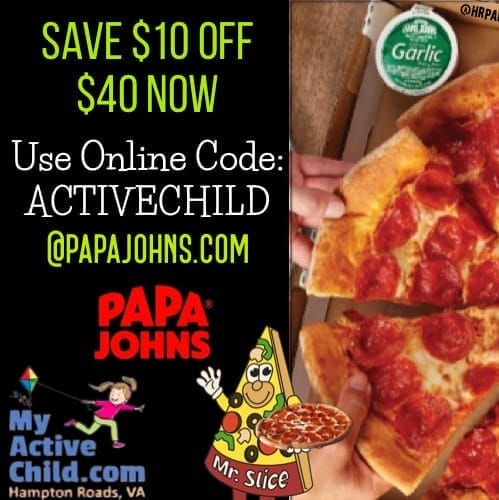Guest Post: Let’s Think About Protecting Kids’ Eyes From The Sun
Coastal Vision is an advertising partner of MyActiveChild.com.

Dr. Russ Beach is an optometrist and co-owner of Coastal Vision with offices in Virginia Beach and Chesapeake. He can be reached at [email protected].
My wife and I are both doctors of optometry, and we have two beautiful little boys. Parker is 4 years old and Greyson will be one this April.
As parents, we naturally want what is best for our children. Every parent wants to be proactive in their child’s health and do whatever they can to protect and promote optimal health as that child grows. This is a main reason why we always put sunblock on our children when they go outside. We all know that the ultraviolet (UV) light from the sun can damage skin and increase risk for skin cancer. And, while parents protect their child’s skin with sunblock, it’s very often that the child’s eyes are left completely unprotected from the sun.
To this last point, I must admit that eye care professionals have not done enough to educate the public on how dangerous the effects of the sun can be on the eyes of a child—and how unprotected sun exposure can cause cumulative changes over time and possibly result in various eye diseases, including eye cancers. My aim in writing this article is to hopefully engage parents to think about protecting their kids’ eyes from the sun the same way they think about protecting their skin.
It’s important to understand that the damaging effect of the sun is cumulative. The effect of exposure adds up over time. UV light from the sun can cause melanomas and other skin cancers on the eyelids, as well as the external surface of the eye itself. Some of these cancers can be metastatic–meaning they spread to other parts of the body. UV exposure is also linked to early cataract formation, macular degeneration, and melanomas on the internal structures of the eye. These may lead to vision loss.
Rarely are any of these sunlight related conditions diagnosed in children. They are diagnosed in adults because it takes years of repeated exposure for the damage to occur. However, there is evidence that as much as 50% of the eye’s UV exposure occurs before the age of 20! That’s a serious statistic to ponder because, as I stated earlier, we typically do so little to protect these younger eyes from the sun. The childhood years of sunlight exposure is setting the stage for eye-related disease down the road.
In understanding sunlight exposure in children, it’s important to note a few differences between child and adult eyes. In children, the eyes’ pupils are significantly larger than in adults. The larger the pupil the more light will be exposed to the internal structures of the eye, such as the retina. Also, the crystalline lens inside the eye of a child is perfectly clear and becomes more yellow in the later decades of life. This clearer lens, unfortunately, filters much less UV and other harmful light. Whereas, the yellow adult lens allows for some UV light filtering.
Thankfully, there are ways to protect your child’s eyes from the damaging effect of the sun. Non-glare prescription lenses have very good UV protection on both sides of the lenses. I also have started prescribing Transitions lenses to every child who needs glasses.
Transitions lenses are clear indoors and turn into tinted sun protective lenses outside. Combining transitions with non-glare lenses allows for nearly complete reduction of UV light exposure and also filters out other harmful wavelengths of sunlight–which is important because research increasingly shows that UV is not the only damaging wavelength of light from the sun.
For the many children who are fortunate enough to not require prescription glasses, I recommend quality UV-blocking tinted sunglasses. I cannot stress enough the importance of quality sunglasses–as cheap sunglasses often provide little to no UV protection.
As a doctor of optometry, I can firmly say that Transitions with non-glare prescription lenses and UV-blocking sunglasses are an investment in the long term safety and eye health of a child. As a parent, I can say that they are in investment in peace of mind–with the knowledge that we are doing all that we can to care for our children. Collectively, every time we put sunblock on a child, let’s also consider how we can best protect that child’s eyes as well.




